p62/SQSTM1 Antibody (2C11)
Novus Biologicals, part of Bio-Techne | Catalog # H00008878-M01

Key Product Details
Validated by
Knockout/Knockdown
Species Reactivity
Validated:
Human, Mouse, Rat, Bovine, Hamster, Rabbit
Cited:
Human, Mouse, Rat, Rabbit
Applications
Validated:
ELISA, Immunocytochemistry/ Immunofluorescence, Immunohistochemistry, Immunohistochemistry-Frozen, Immunohistochemistry-Paraffin, Immunoprecipitation, Western Blot
Cited:
B/N, BA, IB, ICC/IF, IF/IHC, IHC, IHC-Fr, IHC-P, WB
Label
Unconjugated
Antibody Source
Monoclonal Mouse IgG2a Kappa Clone # 2C11
Concentration
Concentrations vary lot to lot. See vial label for concentration. If unlisted please contact technical services.
Product Specifications
Immunogen
SQSTM1 (AAH03139.1, 1 a.a. ~ 440 a.a) full-length recombinant protein with GST tag. MW of the GST tag alone is 26 KDa. MASLTVKAYLLGKEDAAREIRRFSFCCSPEPEAEAEAAAGPGPCERLLSRVAALFPALRPGGFQAHYRDEDGDLVAFSSDEELTMAMSYVKDDIFRIYIKEKKECRRDHRPPCAQEAPRNMVHPNVICDGCNGPVVGTRYKCSVCPDYDLCSVCEGKGLHRGHTKLAFPSPFGHLSEGFSHSRWLRKVKHGHFGWPGWEMGPPGNWSPRPPRAGEARPGPTAESASGPSEDPSVNFLKNVGESVAAALSPLGIEVDIDVEHGGKRSRLTPVSPESSSTEEKSSSQPSSCCSDPSKPGGNVEGATQSLAEQMRKIALESEGRPEEQMESDNCSGGDDDWTHLSSKEVDPSTGELQSLQMPESEGPSSLDPSQEGPTGLKEAALYPHLPPEADPRLIESLSQMLSMGFSDEGGWLTRLLQTKNYDIGAALDTIQYSKHPPPL
Reactivity Notes
Rat reactivity reported in scientific literature (PMID: 24352657). Human reactivity reported in scientific literature (PMID: 26571504). Rabbit reactivity reported in scientific literature (PMID: 23569437). Please note that this antibody is reactive to Mouse and derived from the same host, Mouse. Mouse-On-Mouse blocking reagent may be needed for IHC and ICC experiments to reduce high background signal. You can find these reagents under catalog numbers PK-2200-NB and MP-2400-NB. Please contact Technical Support if you have any questions.
Localization
Cytoplasmic
Clonality
Monoclonal
Host
Mouse
Isotype
IgG2a Kappa
Theoretical MW
47.7 kDa.
Disclaimer note: The observed molecular weight of the protein may vary from the listed predicted molecular weight due to post translational modifications, post translation cleavages, relative charges, and other experimental factors.
Disclaimer note: The observed molecular weight of the protein may vary from the listed predicted molecular weight due to post translational modifications, post translation cleavages, relative charges, and other experimental factors.
Description
Quality control test: Antibody Reactive Against Recombinant Protein.
Scientific Data Images for p62/SQSTM1 Antibody (2C11)
Western Blot: p62/SQSTM1 Antibody (2C11) [H00008878-M01] - WB analysis of recombinant p62 protein (immunogen, 74.51 KDa) using SQSTM1/p62 antibody (clone 2C11).
Western Blot: p62/SQSTM1 Antibody (2C11) [H00008878-M01] - WB analysis of p62 in p62 WT and KO mouse hepatocytes and HepG2 cell lysate using anti-p62/SQSTM1 antibody clone 2C11. Sample lane1: p62 +/- mouse hepatocytes, lane 2: p62 -/- mouse hepatocytes, lane3: Wt mouse hepatocytes, lane 4: HepG2 cells. This image is from a verified customer product review.
Immunocytochemistry/Immunofluorescence: p62/SQSTM1 Antibody (2C11) [H00008878-M01] - ICC-IF analysis of SQSTM1 protein in HeLa cell using SQSTM1/p62 antibody (clone 2C11) at 10 ug/ml concentration.
Applications for p62/SQSTM1 Antibody (2C11)
Application
Recommended Usage
Immunocytochemistry/ Immunofluorescence
10ug/mL
Immunohistochemistry
1:10-1:500
Immunohistochemistry-Frozen
1:10-1:500
Immunohistochemistry-Paraffin
1:10-1:500
Immunoprecipitation
1:10-1:1000
Western Blot
1:100-1:2000
Application Notes
Use in Immunohistochemistry-paraffin reported in scientific literature (PMID: 23569437).
Reviewed Applications
Read 10 reviews rated 4.2 using H00008878-M01 in the following applications:
Formulation, Preparation, and Storage
Purification
IgG purified
Formulation
In 1x PBS, pH 7.4
Preservative
No Preservative
Concentration
Concentrations vary lot to lot. See vial label for concentration. If unlisted please contact technical services.
Shipping
The product is shipped with polar packs. Upon receipt, store it immediately at the temperature recommended below.
Stability & Storage
Aliquot and store at -20C or -80C. Avoid freeze-thaw cycles.
Background: p62/SQSTM1
Abnormal function of p62/SQSTM1 is associated with a range of disease states such as neurodegeneration, cancer, and metabolic disorders (2). Mutations in the p62/SQSTM1 sequence have been linked to Paget's disease of the bone, amyotrophic lateral sclerosis, and frontotemporal lobar degeneration. In Parkinson's disease, p62/SQSTM1 has been linked to microglia activation and subsequent neuroinflammation (3). Functionally, p62/SQSTM1 is involved in a broad range of cellular processes such as amino acid sensing by interaction with mTORC1, oxidative stress response through interaction with Keap1, and targeting cargo for autophagy by interacting with ubiquitin labeled proteins (1).
To induce selective autophagy, p62/SQSTM1 forms long oligomers or helical filaments which interact with LC3 and ubiquitin labeled proteins and lead to the initiation of the autophagosome formation (2). p62/SQSTM1 is not only a selective autophagy receptor but also an autophagy substrate, as its engulfed by the autophagosome and degraded by the autophagolysosome. Monitoring LC3 levels is the standard for assessing autophagic flux, however monitoring p62/SQSTM1 levels by Western blot in the presence and absence of autophagy inhibitors (e.g., Chloroquine) is also a common practice (4). Besides its activity as a selective autophagy receptor, p62/SQSTM1 also plays a role as an adaptor in signaling cascades leading to NFkB activation downstream of TNF-R, IL-1 beta R, TrkA and p75NTR. Briefly, for NFkB signaling downstream of the TNF-R activation, p62/SQSTM1 engages RIP1 kinase and PKC iota/lambda through the ZZ and PB1 domains, respectively (5).
References
1.Katsuragi, Y., Ichimura, Y., & Komatsu, M. (2015). P62/SQSTM1 functions as a signaling hub and an autophagy adaptor. FEBS Journal. https://doi.org/10.1111/febs.13540
2. Sanchez-Martin, P., & Komatsu, M. (2018). p62/SQSTM1 - Steering the cell through health and disease. Journal of Cell Science. https://doi.org/10.1242/jcs.222836
3. Yao, L., Zhu, Z., Wu, J., Zhang, Y., Zhang, H., Sun, X., ... Lu, G. (2019). MicroRNA-124 regulates the expression of p62/p38 and promotes autophagy in the inflammatory pathogenesis of Parkinson's disease. The FASEB Journal. https://doi.org/10.1096/fj.201900363r
4 Klionsky, D. J., Abdelmohsen, K., Abe, A., Abedin, M. J., Abeliovich, H., Arozena, A. A., ... Zughaier, S. M. (2016). Guidelines for the use and interpretation of assays for monitoring autophagy (3rd edition). Autophagy. https://doi.org/10.1080/15548627.2015.1100356
5. Bitto, A., Lerner, C. A., Nacarelli, T., Crowe, E., Torres, C., & Sell, C. (2014). p62/SQSTM1 at the interface of aging, autophagy, and disease. Age. https://doi.org/10.1007/s11357-014-9626-3
Long Name
Sequestosome 1
Alternate Names
A170, EBIAP, ORCA, OSIL, PDB3, Sequestosome 1, SQSTM1, ZIP3
Gene Symbol
SQSTM1
UniProt
Additional p62/SQSTM1 Products
Product Documents for p62/SQSTM1 Antibody (2C11)
Product Specific Notices for p62/SQSTM1 Antibody (2C11)
This product is produced by and distributed for Abnova, a company based in Taiwan.
This product is for research use only and is not approved for use in humans or in clinical diagnosis. Primary Antibodies are guaranteed for 1 year from date of receipt.
Loading...
Loading...
Loading...
Loading...
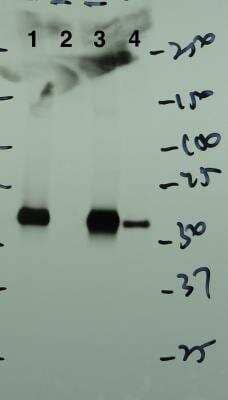

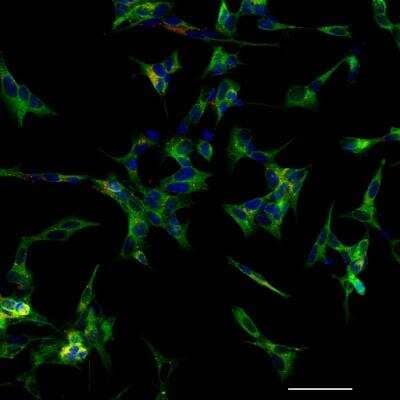

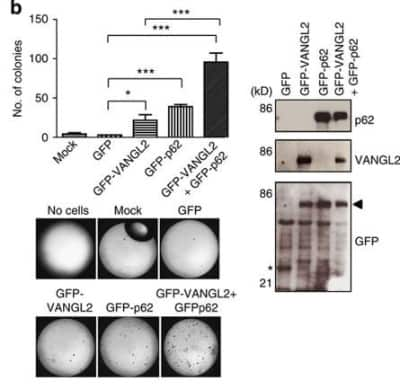
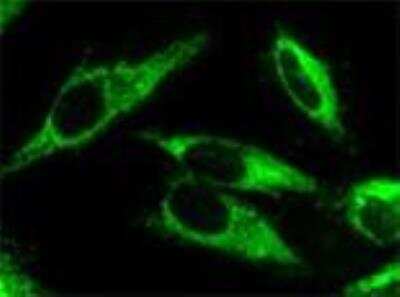

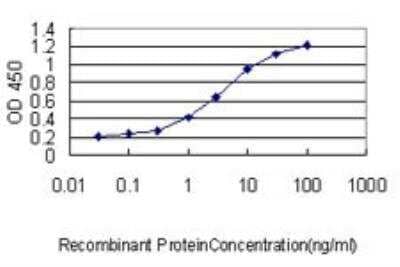
![Western Blot: p62/SQSTM1 Antibody (2C11) [H00008878-M01] - p62/SQSTM1 Antibody (2C11)](https://resources.bio-techne.com/images/products/h00008878-m01_mouse-monoclonal-p62-sqstm1-antibody-2c11-291220231145532.jpg)
![Western Blot: p62/SQSTM1 Antibody (2C11) [H00008878-M01] - p62/SQSTM1 Antibody (2C11)](https://resources.bio-techne.com/images/products/h00008878-m01_mouse-monoclonal-p62-sqstm1-antibody-2c11-291220231221943.jpg)
![Simple Western: p62/SQSTM1 Antibody (2C11) [H00008878-M01] - p62/SQSTM1 Antibody (2C11)](https://resources.bio-techne.com/images/products/h00008878-m01_mouse-monoclonal-p62-sqstm1-antibody-2c11-23220248221387.jpg)
![Immunoprecipitation: p62/SQSTM1 Antibody (2C11) [H00008878-M01] - p62/SQSTM1 Antibody (2C11)](https://resources.bio-techne.com/images/products/h00008878-m01_mouse-monoclonal-p62-sqstm1-antibody-2c11-23220248185425.jpg)
![Immunohistochemistry: p62/SQSTM1 Antibody (2C11) [H00008878-M01] - p62/SQSTM1 Antibody (2C11)](https://resources.bio-techne.com/images/products/h00008878-m01_mouse-monoclonal-p62-sqstm1-antibody-2c11-23220248194397.jpg)